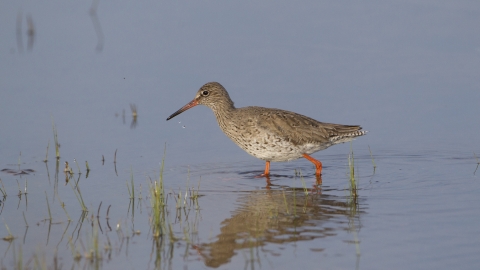
Mark Hamblin/2020VISION

Lincolnshire Wildlife Trust
Lincolnshire Wildlife Trust
Stanton's Pit
Know before you go
Dogs
Assistance dogs only
When to visit
Opening times
Open at all timesBest time to visit
April to JulyAbout the reserve
The area was formerly a sand pit and is a gift from the former owner, Mr Stanton, for use as a nature reserve. After becoming a nature reserve in 1996, work initially focused on major landscaping and stabilisation of the previous quarry edges.
A policy of ‘letting nature take its course’ has followed with the quarried land being gradually reclaimed, aided by early planting of many hundreds of trees and shrubs. A mosaic of habitats has resulted with areas of grassland, gorse, hawthorn/bramble and some marshier patches.
Whilst the reserve has, in the past, been most visited for the birds, the grassland areas include many common spotted and some bee orchids as well as a variety of other plants. Butterflies, dragonflies and damselflies can be frequent at certain times of the year, and normally there is evidence or sightings of mammals including deer, fox and stoat.
Birds still represent a major attraction of the reserve, although the bird hide has unfortunately been removed due to repeated vandalism. Over 50 species are seen each year with breeding birds including chiffchaff, willow warbler, whitethroat, green woodpecker, little grebe and others.
Little egret is now a regular visitor, fieldfares and redwings flood in during winter, red kites routinely visit with excellent views, and kingfisher, woodcock, oystercatcher and lesser whitethroat have all been seen in the last two years.
Management activities have focused on controlling the spread of certain species to keep the grassland areas open and maintaining the variation of the reserve habitats. Grazing through cattle and sheep as well as mechanical work has been employed to achieve these results.
Work planned for 2019 and 2020 is targeted at continuing to maintain the habitat diversity and to re-create the muddier feeding edges of the lake which in the past have attracted many wader species during autumn particularly.
Nearest postcode PE10 0JN. Please note - postcodes are for the nearest registered address as we are unable to get postcodes for nature reserves.

